The Use of Nutraceuticals in the Top Five Cancers with the Highest Number of Deaths Globally
Aayushi Patel1,#, Shrina Patel1,#, Shobha Potlakayala1, Arati Sharma2, Dhimant Desai3, Sairam Rudrabhatla1*
1Penn State Harrisburg, Middletown, PA, USA
2Penn State Cancer Institute, Pennsylvania State University College of Medicine, Hershey, PA, USA
3Department of Pharmacology, Pennsylvania State University College of Medicine, Hershey, PA, USA
#Equal Contribution
*Corresponding author: Sairam Rudrabhatla, Professor of Biology, Program Chair of Biology and Science, Director for Central Pennsylvania Research and Teaching Laboratory for Biofuels, Penn State Harrisburg, Middletown, PA, USA.
Received: 26 August 2022; Accepted: 05 September 2022; Published: 10 October 2022
Article Information
Citation: Aayushi Patel, Shrina Patel, Shobha Potlakayala, Arati Sharma, Dhimant Desai, Sairam Rudrabhatla. The use of Nutraceuticals in the Top Five Cancers with the Highest Number of Deaths Globally. Journal of Biotechnology and Biomedicine 5 (2022): 192-203.
DOI: 10.26502/jbb.2642-91280060
View / Download Pdf Share at FacebookAbstract
Cancer is a group of diseases with some of the highest health burdens globally and its mortality rate comes second after heart failure. Conventional cancer treatment options, of which chemotherapy is the main option, do not have a high success rate. As an alternative treatment option, nutraceuticals, derived from “nutrition” and “pharmaceutics,” are being considered. Nutraceuticals have gained traction for their use in cancer treatment and being explored for their therapeutic value. Unlike conventional treatments which have major side effects, nutraceuticals possess minimal side effects. Most recently the implications of nutraceuticals in various types of cancers have been studied due to their medicinal potential and benefits, especially in relation to decreasing the tumor burden.
Keywords
Nutraceuticals; Lung cancer; Breast cancer; Gastric cancer; Plant-derived bioactive agents
Nutraceuticals articles Nutraceuticals Research articles Nutraceuticals review articles Nutraceuticals PubMed articles Nutraceuticals PubMed Central articles Nutraceuticals 2023 articles Nutraceuticals 2024 articles Nutraceuticals Scopus articles Nutraceuticals impact factor journals Nutraceuticals Scopus journals Nutraceuticals PubMed journals Nutraceuticals medical journals Nutraceuticals free journals Nutraceuticals best journals Nutraceuticals top journals Nutraceuticals free medical journals Nutraceuticals famous journals Nutraceuticals Google Scholar indexed journals Lung cancer articles Lung cancer Research articles Lung cancer review articles Lung cancer PubMed articles Lung cancer PubMed Central articles Lung cancer 2023 articles Lung cancer 2024 articles Lung cancer Scopus articles Lung cancer impact factor journals Lung cancer Scopus journals Lung cancer PubMed journals Lung cancer medical journals Lung cancer free journals Lung cancer best journals Lung cancer top journals Lung cancer free medical journals Lung cancer famous journals Lung cancer Google Scholar indexed journals Breast cancer articles Breast cancer Research articles Breast cancer review articles Breast cancer PubMed articles Breast cancer PubMed Central articles Breast cancer 2023 articles Breast cancer 2024 articles Breast cancer Scopus articles Breast cancer impact factor journals Breast cancer Scopus journals Breast cancer PubMed journals Breast cancer medical journals Breast cancer free journals Breast cancer best journals Breast cancer top journals Breast cancer free medical journals Breast cancer famous journals Breast cancer Google Scholar indexed journals Gastric cancer articles Gastric cancer Research articles Gastric cancer review articles Gastric cancer PubMed articles Gastric cancer PubMed Central articles Gastric cancer 2023 articles Gastric cancer 2024 articles Gastric cancer Scopus articles Gastric cancer impact factor journals Gastric cancer Scopus journals Gastric cancer PubMed journals Gastric cancer medical journals Gastric cancer free journals Gastric cancer best journals Gastric cancer top journals Gastric cancer free medical journals Gastric cancer famous journals Gastric cancer Google Scholar indexed journals Plant-derived bioactive agents articles Plant-derived bioactive agents Research articles Plant-derived bioactive agents review articles Plant-derived bioactive agents PubMed articles Plant-derived bioactive agents PubMed Central articles Plant-derived bioactive agents 2023 articles Plant-derived bioactive agents 2024 articles Plant-derived bioactive agents Scopus articles Plant-derived bioactive agents impact factor journals Plant-derived bioactive agents Scopus journals Plant-derived bioactive agents PubMed journals Plant-derived bioactive agents medical journals Plant-derived bioactive agents free journals Plant-derived bioactive agents best journals Plant-derived bioactive agents top journals Plant-derived bioactive agents free medical journals Plant-derived bioactive agents famous journals Plant-derived bioactive agents Google Scholar indexed journals chemotherapy articles chemotherapy Research articles chemotherapy review articles chemotherapy PubMed articles chemotherapy PubMed Central articles chemotherapy 2023 articles chemotherapy 2024 articles chemotherapy Scopus articles chemotherapy impact factor journals chemotherapy Scopus journals chemotherapy PubMed journals chemotherapy medical journals chemotherapy free journals chemotherapy best journals chemotherapy top journals chemotherapy free medical journals chemotherapy famous journals chemotherapy Google Scholar indexed journals metastasize articles metastasize Research articles metastasize review articles metastasize PubMed articles metastasize PubMed Central articles metastasize 2023 articles metastasize 2024 articles metastasize Scopus articles metastasize impact factor journals metastasize Scopus journals metastasize PubMed journals metastasize medical journals metastasize free journals metastasize best journals metastasize top journals metastasize free medical journals metastasize famous journals metastasize Google Scholar indexed journals cyanidin glycosides articles cyanidin glycosides Research articles cyanidin glycosides review articles cyanidin glycosides PubMed articles cyanidin glycosides PubMed Central articles cyanidin glycosides 2023 articles cyanidin glycosides 2024 articles cyanidin glycosides Scopus articles cyanidin glycosides impact factor journals cyanidin glycosides Scopus journals cyanidin glycosides PubMed journals cyanidin glycosides medical journals cyanidin glycosides free journals cyanidin glycosides best journals cyanidin glycosides top journals cyanidin glycosides free medical journals cyanidin glycosides famous journals cyanidin glycosides Google Scholar indexed journals flavonoids articles flavonoids Research articles flavonoids review articles flavonoids PubMed articles flavonoids PubMed Central articles flavonoids 2023 articles flavonoids 2024 articles flavonoids Scopus articles flavonoids impact factor journals flavonoids Scopus journals flavonoids PubMed journals flavonoids medical journals flavonoids free journals flavonoids best journals flavonoids top journals flavonoids free medical journals flavonoids famous journals flavonoids Google Scholar indexed journals quinoline alkaloid articles quinoline alkaloid Research articles quinoline alkaloid review articles quinoline alkaloid PubMed articles quinoline alkaloid PubMed Central articles quinoline alkaloid 2023 articles quinoline alkaloid 2024 articles quinoline alkaloid Scopus articles quinoline alkaloid impact factor journals quinoline alkaloid Scopus journals quinoline alkaloid PubMed journals quinoline alkaloid medical journals quinoline alkaloid free journals quinoline alkaloid best journals quinoline alkaloid top journals quinoline alkaloid free medical journals quinoline alkaloid famous journals quinoline alkaloid Google Scholar indexed journals
Article Details
1. Overview of Cancer and Cancer Staging
Cancer is the second leading cause of death accounting for about 1 in 6 deaths in 2018 [1]. By definition, cancer is an umbrella of diseases characterized by uncontrollable abnormal cell growth; cancer can start in a specific tissue or organ and in advanced stages metastasize to other tissues and organs in the body [2]. Globally, the cancer burden in terms of physical, emotional, and financial strain continues to grow [2]. Cancer advancement can be defined by certain stages. Multiple staging systems exist, however, the most common and widely used staging system is the TNM system as seen in Figure 1 [3, 4].
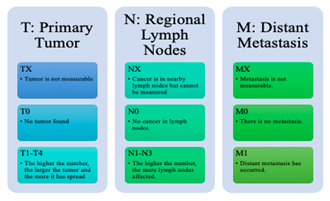
Figure 1: TNM Staging System of Cancer Progression.
The TNM system is used to provide detailed information about the stage and progression of the tumor. Overall, the TNM system is summarized into the following 5-stage staging system (Figure 2) which provides less detail than the TNM staging system [4, 5].
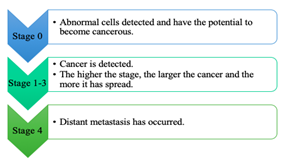
Figure 2: 5-Stage staging system.
Detecting cancer at an early stage is crucial to the success and path of treatment. Early detection is made possible through screening. The treatment for cancer is surgery, medications, chemotherapy, radiotherapy, or a mix of the aforementioned. A team consisting of professionals from multiple disciplines will derive an individualized treatment plan for a patient based on cancer type, cancer stage, and other factors [2].
2. Nutraceuticals and Plant-Derived Agents in Cancer Treatment
Nutraceuticals, a term coined by Stephen Defelice, is derived from “nutrition” and “pharmaceutics” which are combined to create compounds that are beneficial to human health and therapeutic [6]. Nutraceuticals can be either plant- or animal-derived. Well-known nutraceuticals are mainly phytochemicals - plant extracts that include parts of the plant such as the roots, seeds, berries leaves, bark, or flowers [7, 8].
There are plethora of categorizations of nutraceuticals. They have been previously categorized as potential or established nutraceuticals, chemical constituents, or based on their therapeutic effect [9]. Figure 3 summarizes the most common classes and active ingredients of nutraceuticals. The active ingredients are predominantly secondary metabolites produced by plants. Phytochemicals that potentially have therapeutic value include polyphenols, flavonoids, isoflavonoids, anthocyanidins, terpenes, carotenoids, alkaloids, and saponins [8]. These secondary metabolites are behind the medicinal properties of the plants including but not limited to anticarcinogenic, antitumorigenic, anti-inflammatory, antioxidant, antiseptic, and antimicrobial [8].
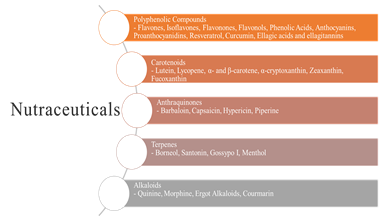
Figure 3: Classes and active ingredients of nutraceuticals [9].
In addition to nutraceuticals, plant-derived anticancer agents have long been used in cancer treatment. There are main classes of plant-derived anticancer agents: vinca alkaloids, epipodophyllotoxins, taxanes, cephalotaxus alkaloids, combretastatins, triterpenoid acids, flavones or flavonoids, cyanidin glycosides, quinoline alkaloid, etoposide, harringtonin and homoharringtonin, alkaloids, phenolics, polyphenols, napthoquinone esters, phorbol esters, camptothecin derivatives, and other phytomolecules [10, 11]. Each of these classes exerts different effects resulting in their overall anti-cancer activity.
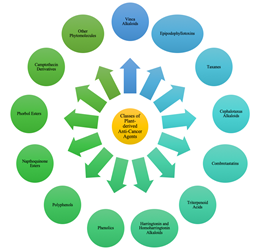
Figure 4: Plant-Derived Anti-Cancer Agents [10-11]
3. Lung Cancer
In 2020, lung cancer was the second most common cancer globally with 2.21 million cases and was the leading cancer in the most cancer-caused deaths with 1.80 million deaths globally [1]. In the United States, lung cancer is the third most common cancer with it also being the leading cancer in terms of the number of deaths accounting for almost 25% of all cancer-related deaths [12, 13]. The estimated number of new cases of lung cancer in 2022 in the United States is 236,740 cases with the estimated deaths in 2022 being 130,180 deaths in the United States [14]. The 5-year survival rate is 22.9% [14]. By definition, lung cancer is defined as cancer that originated in the lung and can be either small cell carcinoma or non-small cell carcinoma which is more common than small cell carcinoma. Non-small cell carcinoma includes adenocarcinoma and squamous cell carcinoma [15, 16]. Figure 5 shows the most common risk factors for lung cancer including smoking and exposure to pollutants [17, 18].
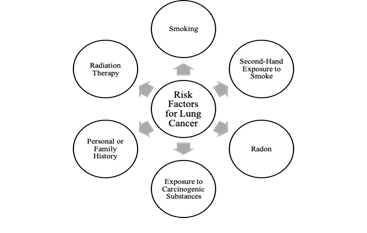
Figure 5: Risk Factors for Lung Cancer
Out of the risk factors mentioned in figure 5, smoking is the leading risk factor followed by exposure to radon. Smoking has been strongly linked to the increased occurrence of lung cancer. Quitting smoking will reduce the risk for lung cancer, but not to the level of someone who has never smoked [17, 18].
Plants and herbal medicine have been implicated in the care, management, and treatment of lung cancer. Plant-derived molecules may also increase or decrease the risk of lung cancer. Carotenoids, alpha-carotene, beta-carotene, lycopene, lutein or zeaxanthin, isothiocyanates, flavonoids, flavanones, proanthocyanidins, isoflavonoids, have been associated with a potential to decrease the risk of lung cancer in certain populations when administered at high levels [19, 24]. Medicinal plant extracts have shown anticancer activity against lung cancer in preclinical and clinical studies with inducing apoptosis as one of the most common mechanisms of action demonstrated.
4. Colorectal Cancer
In 2020, colorectal cancer was the third most common cancer globally with 1.93 million cases and was the second-most cancer-caused deaths with 916,000 deaths globally [1]. In the United States, colorectal cancer is the fourth most common cancer in men and women with it also being the fourth leading cancer in terms of the number of deaths [25]. The estimated number of new cases in 2022 for colorectal cancer in the United States is 151,030 cases with 52,580 estimated deaths in 2022 in the United States [26]. The 5-year survival rate for colorectal cancer is 65.1% [26]. By definition, colorectal cancer is defined as the abnormal growth of cells in the colon or the rectum. Figure 6 shows the most common risk factors for colorectal cancer [27].
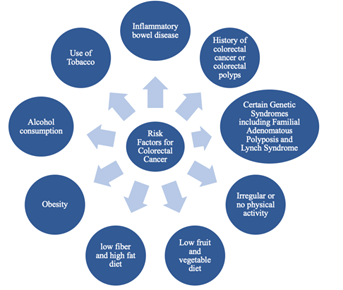
Figure 6: Risk Factors for Colorectal Cancer.
Plant-derived bioactive compounds are often used in the treatment of colorectal cancer. In fact, many anti-cancer chemotherapeutic drugs utilize plant bioactive compounds as well. The most commonly used bioactive compounds in colorectal cancer include curcumin, anthocyanin-rich phenolics, ellagic acid, catechins, quercetin, alkaloids, emodin, carnosic acid, oleanolic acid [28, 29]. Additionally, plant extracts have also been shown to have anticancer activity against colorectal cancer such as methanol extracts of Achyranthes aspera, ethanol extracts from Withania somnifera and Chamaecyparis obtuse, water extracts of Salvia officianales and Salvia fruticosa [28-29]. Whole plants have also been implicated with different parts of the same plant contributing to different portions of management, treatment, and care; an example of such a plant is moringa [28, 29].
5. Liver Cancer
In 2020, liver cancer was the third-most cancer-caused deaths with 830,000 deaths globally [1]. In the United States, the estimated number of new cases of liver cancer in 2022 is 41,260 cases with the estimated deaths in 2022 being 30 520 deaths [30]. Figure 7 shows the most common risk factors for liver cancer [31].
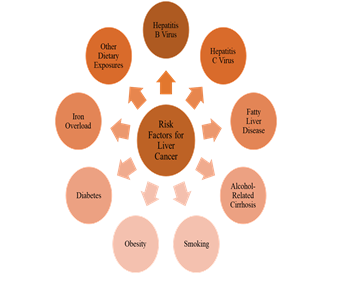
Figure 7: Risk Factors for Liver Cancer.
Phytochemical studies have become popular because of their beneficial effects on human health, which also includes anticancer properties. The Ammi visnaga, native to the Middle East, has been shown to have antimicrobial, anti-inflammatory effects and is used in the treatment of kidney stones and coronary diseases [32]. There was a study done investigating the cytotoxicity and apoptotic effect of the extract on human liver cancer cell lines. The study found that the seed extracts had a hepatoprotective potential and could be a potential therapeutic agent [32]. A β-carboline alkaloid, dehydrocrenatidine from Picrasma quassioides, is known to have analgesic effects and has demonstrated anticarcinogenic effects [33]. A study has demonstrated that dehydrocrenatidine inhibits proliferation and induces apoptosis, thus is identified as a potent anticancer agent [33].
6. Gastric Cancer
In 2020, stomach cancer, also referred to as gastric cancer, was the fifth most common cancer globally with 1.09 million cases and was the fourth-most cancer-caused deaths with 769,000 deaths globally [1]. In the United States, the estimated number of new cases of gastric cancer in 2022 is 26,380 cases with the estimated number of deaths in 2022 being 11,090 deaths [34]. The 5-year survival rate in the United States is 33.3% [34]. By definition, gastric cancer is defined as cancer originating in the lining of the stomach. Figure 6 shows the most common risk factors for stomach cancer [35].
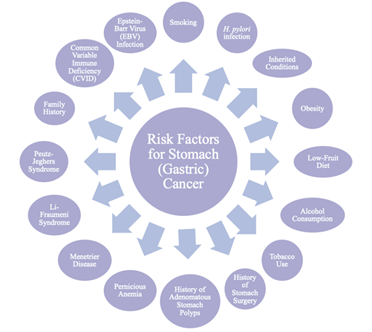
Figure 8: Risk Factors for Gastric Cancer.
Though many plant-derived agents have not been identified for stomach cancer, numerous agents are being explored including new compounds as well as compounds that have shown efficacy in other cancers. Isothiocyanates are one such compound that is being explored for their efficacy against gastric cancer [36]. Others include resveratrol and oleanolic acid [37, 38].
7. Breast Cancer
In 2020, breast cancer was the first most common cancer globally with 2.26 million cases and was the fifth-most cancer-caused deaths with 685,000 deaths globally [1]. In the United States, the estimated number of new cases of breast cancer in 2022 is 290,560 cases with the estimated number of deaths in 2022 being 43,780 deaths [30]. Figure 9 shows the most common risk factors for breast cancer [39, 40].
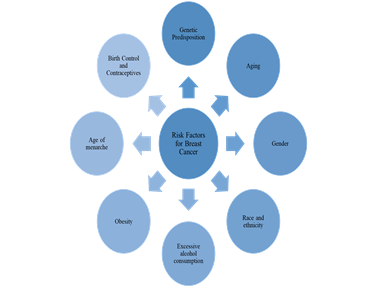
Figure 9: Risk Factors for Breast Cancer.
Many plant extracts are being explored as potential treatment options. In a study, it was confirmed that methanolic extract of Plantago major has cytotoxic effects on breast cancer. Betulin and betulinic acid isolated from birch trees have shown anticancer effects. Methanolic extracts of Calystegia sepium have shown a significant increase in apoptosis in all cancer cell lines evaluated in the study [41]. Another plant that has shown anticancer effects is Mangifera indica. Previous studies have reported anti-cancer activities of Mangifera indica pulp extracts which have been attributed to its polyphenolic contents [42].
8. Advantages of Nutraceuticals in Cancer Treatment
As cancer is a leading cause of death globally, effective treatment is necessary. Conventional cancer treatment includes chemotherapy, radiation therapy, adjuvant therapy, immunotherapy, hormone therapy, and surgery [7]. There are some drawbacks associated with the use of conventional cancer treatments. Chemotherapy is most often used to treat cancer, however, 90% of chemotherapeutics fail to achieve their goal due to chemoresistance and cause massive side effects [7]. As cancer cells develop resistance to chemotherapeutics, increasing the dosage could be considered to combat chemoresistance, however, there are massive side effects [7]. Due to this other therapeutic options should be considered. This is where the use of nutraceuticals is being explored. These can improve the therapeutic efficacy of the current drugs and can become a viable treatment option while having minimal side effects on noncancerous cells [7].
9. Conclusion
Nutraceuticals, in recent decades, have been growing in importance, especially in relation to cancer care, management, and treatment. In the top 5 cancers by the number of deaths globally, nutraceuticals have shown great potential to play a significant role. The use of nutraceuticals in these cancers among other cancers and ailments will only increase with the further advancement of research and development of nutraceuticals.
Acknowledgements
The authors would like to acknowledge the School of Science, Engineering, and Technology at Penn State Harrisburg.
Conflict of Interest
The authors declare no conflicts of interest regarding the publication of this review.
References
- World Health Organization. Cancer: Key Facts. World Health Organization (2022).
- World Health Organization. Cancer. World Health Organization (2022).
- O'Sullivan B, Brierley J, Byrd D, et al. The TNM classification of malignant tumours-towards common understanding and reasonable expectations. Lancet Oncol (2017): 849-851.
- American Cancer Society. Cancer Staging. American Cancer Society (2022).
- National Cancer Institute. Cancer Staging. NIH: National Cancer Institute (2015).
- Mistry M, Patel A, Patel S, et al. Nutritional Genomics - An Overview of CRISPR/Cas9 Genome Editing System on Nutraceuticals. Curr Tr Biotech & Microbio 2 (2022).
- Nair HH, Alex VV, Anto RJ. Significance of nutraceuticals in cancer therapy. Evolutionary Diversity as a Source for Anticancer Molecules, Elsevier (2021).
- Patel A, Patel S, Sanke P, et al. Medicinally Important Compounds in the Flowers of Three Higher Plants: Cannabis, Saffron, and Epiphyllum oxypetalum. Biomed J Sci and Tech Res 36 (2021).
- Da Costa JP. A Current Look at Nutraceuticals - Key Concepts and Future Prospects. Trends in Food Science and Technology 62 (2017). 68-78.
- Desai AG, Qazi GN, Ganju RK, et al. Medicinal plants and cancer chemoprevention. Curr Drug Metab (2008). 581-591.
- Iqbal J, Abbasi BA, Mahmood T, et al. Plant-derived anticancer agents: A green anticancer approach. Asian Pacific Journal of Tropical Biomedicine 7 (2017): 1129-1150.
- Centers for Disease Control and Prevention. Lung Cancer. Centers for Disease Control and Prevention (2022).
- American Cancer Society. Key Statistics for Lung Cancer. American Cancer Society (2022).
- National Cancer Institute. Cancer Stat Facts: Lung and Bronchus Cancer. NIH: National Cancer Institute: Surveillance, Epidemiology, and End Results Program.
- Centers for Disease Control and Prevention. What is Lung Cancer?. Centers for Disease Control and Prevention (2022).
- Thandra KC, Barsouk A, Saginala K, et al. Epidemiology of lung cancer. Contemporary Oncology 25 (2021).
- Nooreldeen R, Bach H. Current and Future Development in Lung Cancer Diagnosis. Int J Mol Sci 22 (2021): 8661.
- Centers for Disease Control and Prevention. What are the Risk Factors for Lung Cancer? Centers for Disease Control and Prevention (2022).
- Knekt P, Järvinen R, Teppo L, et al. Role of various carotenoids in lung cancer prevention. JNCI: Journal of the National Cancer Institute 91 (1999): 182-184.
- Amararathna M, Johnston MR, Rupasinghe HPV. Plant polyphenols as chemopreventive agents for lung cancer. Int J Mol Sci 17 (2016): 1352.
- Rajasekar N, Sivanantham A, Ravikumar V, et al. An overview on the role of plant-derived tannins for the treatment of lung cancer. Phytochemistry 188 (2021).
- Holick CN, Michaud DS, Stolzenberg-Solomon R, et al. Dietary Carotenoids, Serum β-Carotene, and Retinol and Risk of Lung Cancer in the Alpha-Tocopherol, Beta-Carotene Cohort Study, American Journal of Epidemiology 156 (2002): 536-547.
- Feskanich D, Ziegler RG, Michaud DS, et al. Prospective Study of Fruit and Vegetable Consumption and Risk of Lung Cancer Among Men and Women, JNCI: Journal of the National Cancer Institute 92 (2000): 1812-1823.
- Miller PE, Snyder DC. Phytochemicals and Cancer Risk. Nutrition in Clinical Practice 27 (2012).
- Centers for Disease Control and Prevention. Colorectal Cancer Statistics. Centers for Disease Control and Prevention (2022).
- National Cancer Institute. Cancer Stat Facts: Colorectal Cancer. NIH: National Cancer Institute: Surveillance, Epidemiology, and End Results Program.
- Centers for Disease Control and Prevention. What are the Risk Factors for Colorectal Cancer? Centers for Disease Control and Prevention (2022).
- Rossi M, Mirbagheri SS, Keshavarzian A, et al. Nutraceuticals in colorectal cancer: A mechanistic approach. European Journal of Pharmacology 833 (2018).
- Esmeeta A, Adhikary S, Dharshnaa V, et al. Plant-derived bioactive compounds in colon cancer treatment: An updated review. Biomedicine & Pharmacotherapy 153 (2022).
- Siegel RL, Miller KD, Fuchs HE, et al. Cancer statistics, 2021. CA: Cancer Journal for Clinicians 71(2021): 7-33.
- Anwanwan D, Singh SK, Singh S, et al. Challenges in liver cancer and possible treatment approaches. Biochimica et Biophysica Acta (BBA)-Reviews on Cancer 1873 (2020): 188314.
- Arafah MW, Almutairi B, Al-Zharani M, et al. The protective effect of Ammi visnaga extract against human hepatic cancer. Journal of King Saud University-Science 33 (2021): 101540.
- Velmurugan BK, Hsieh MJ, Lin CC, et al. Dehydrocrenatidine Induces Liver Cancer Cell Apoptosis by Suppressing JNK-Mediated Signaling. Pharmaceuticals 15 (2022): 402.
- National Cancer Institute. Cancer Stat Facts: Stomach Cancer. NIH: National Cancer Institute: Surveillance, Epidemiology, and End Results Program.
- Zali H, Rezaei-Tavirani M, Azodi M. Gastric cancer: prevention, risk factors and treatment. Gastroenterol Hepatol Bed Bench 4 (2011): 175-185.
- Rabben HL, Kodama Y, Nakamura M, et al. Chemopreventive Effects of Dietary Isothiocyanates in Animal Models of Gastric Cancer and Synergistic Anticancer Effects With Cisplatin in Human Gastric Cancer Cells. Pharmacol (2021).
- Li Y, Xu Q, Yang W, et al. Oleanolic acid reduces aerobic glycolysis-associated proliferation by inhibiting yes-associated protein in gastric cancer cells. Gene 712 (2019).
- Ashrafizadeh M, Rafiei H, Mohammadinejad R, et al. Anti-tumor activity of resveratrol against gastric cancer: a review of recent advances with an emphasis on molecular pathways. Cancer Cell Int 21 (2021).
- Feng Y, Spezia M, Huang S, et al. Breast cancer development and progression: Risk factors, cancer stem cells, signaling pathways, genomics, and molecular pathogenesis. Genes and diseases 5 (2018): 77-106.
- Barnard ME, Boeke CE, Tamimi RM. Established breast cancer risk factors and risk of intrinsic tumor subtypes. Biochimica et Biophysica Acta (BBA)-Reviews on Cancer 1856 (2015): 73-85.
- Rezadoost MH, Kumleh HH, Ghasempour A. Cytotoxicity and apoptosis induction in breast cancer, skin cancer and glioblastoma cells by plant extracts. Molecular Biology Reports 46 (2019): 5131-5142.
- Yap KM, Sekar M, Seow LJ, et al. Mangifera indica (Mango): A promising medicinal plant for breast cancer therapy and understanding its potential mechanisms of action. Breast Cancer: Targets and Therapy 13 (2021): 471.


 Impact Factor: * 5.3
Impact Factor: * 5.3 Acceptance Rate: 75.63%
Acceptance Rate: 75.63%  Time to first decision: 10.4 days
Time to first decision: 10.4 days  Time from article received to acceptance: 2-3 weeks
Time from article received to acceptance: 2-3 weeks 